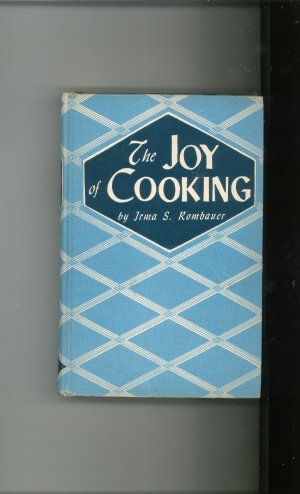


Louis a few months after the stock market crash of 1929. One of her aims in writing the book was to persuade American women that cooking was not a daily, labor-intensive, time-consuming chore, but rather a delight, indeed, a "joy." The book's title has something of an ironic tinge, because Rombauer's husband had suffered from depression for much of his adult life, and committed suicide in the family home in St. Over the next few decades Rombauer matured into an accomplished chef and renowned hostess. Her husband was an avid outdoor man, however, and had instructed her in some of the basics of the camp stove. Married to a lawyer in 1899, she had had little experience in the kitchen as a young wife, and like other affluent women of the era, she relied on domestic staff to help plan and cook meals for family dinners and social events.

Louis socialite of patrician German birth when she began assembling her wealth of recipes into book form in 1930, partly at the request of her two grown children. Part of Joy of Cooking's success lies in the way it presents the art of food preparation in simple, forthright terminology. By the end of the twentieth century, it was the top-selling all-purpose cookbook in publishing history, deemed the bible of American culinary customs, from cocktails to custards. In 1977 a revised edition was issued by its new publisher, Simon & Schuster, and despite the vast changes in the eating habits of American households over the decades, the detailed tome again landed on the best-seller lists. Rombauer's Joy of Cooking (first edition 1931), sold 14 million copies before 1997-a record that speaks for itself in terms of the enormous influence it has wielded in the development of social culture. An eight-hundred page cookbook that begins with a quote from Goethe's Faust seems an unlikely candidate for a spot on a list of the best-selling books of the century, but Irma S.


 0 kommentar(er)
0 kommentar(er)
